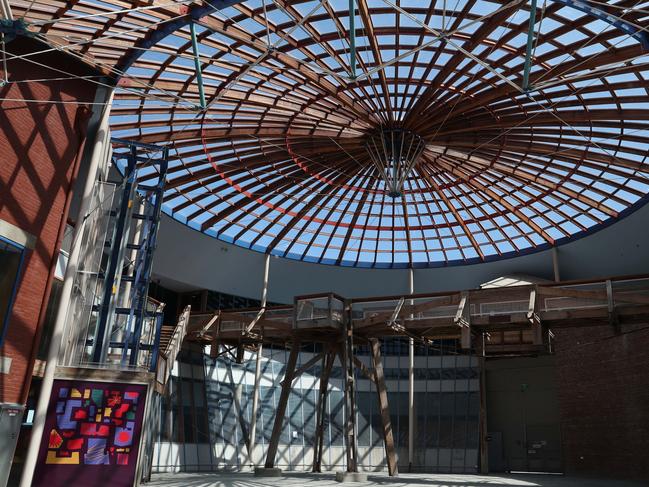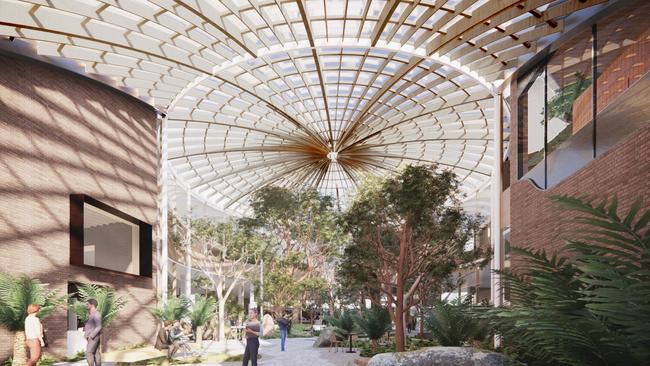Construction recently began on the $131m renovation of the former Forestry Tasmania building
The cost of the University of Tasmania’s latest CBD project has increased by nearly $50 million. Find out why.

Tasmania
Don't miss out on the headlines from Tasmania. Followed categories will be added to My News.
DESIGN changes and the increased cost of materials have caused a University of Tasmania development in the Hobart CBD to blow out by $45 million.
Construction recently began on the $131m renovation of the former Forestry Tasmania building in Melville St.
When complete in 2025, the building will become home to the College of Business and Economics, the Law School and administrative offices.
The project will restore the living forest to the heritage listed dome, creating a new public thoroughfare between Melville and Brisbane Streets.
In March last year the project budget was estimated at $86m.
But the budget has since grown to $131m.

Executive Director Campus Transformation Phil Leersen said the cost of the Forestry building renovation had increased as the project had moved from the high-level design phase to the construction phase.
“This is due to a number of factors including the addition of a new pedestrian bridge to improve accessibility, the complexity of the civil and ground works as well as the important heritage aspects of the project, and the increases in supply and trade costs across the construction sector. The project value incorporates fit out items such as furniture, IT and audiovisual equipment,” Mr Leersen said.

“This is a significant project for our students, our staff and for Hobart and we are committed to doing it right – we’re proud to be making this investment in the city.”
The university says the site, which incorporates the former Freedom Furniture building on Brisbane St, will house 300 staff and support the studies of 3000 students.
UTAS bought the property in 2018 for $15m.
Save UTAS campus chair Pam Sharpe said the cost blowout was significant.
“It’s an astronomical cost to me for refitting a building that isn’t really fit for being a university building,” she said.

“We thought it was astronomical at the old cost but I can see how it has increased.”
Professor Sharpe said a more suitable new or refitted building could have likely been built at the Sandy Bay campus for less.
“Access would have been far easier and they could have done a state of the art building for law and business,” she said.


